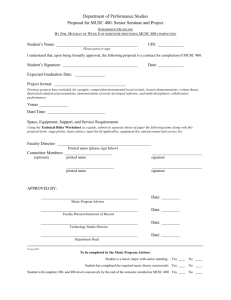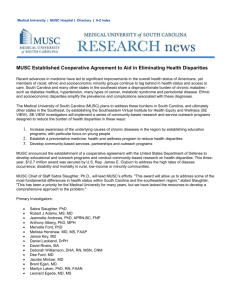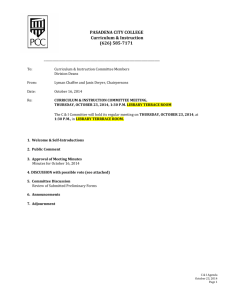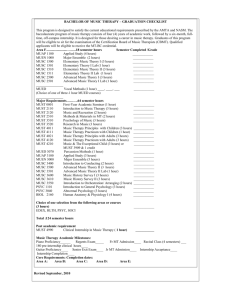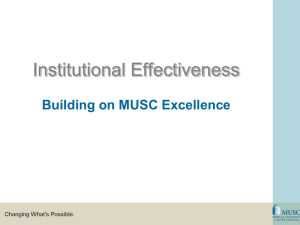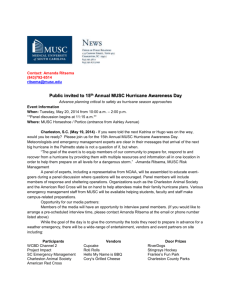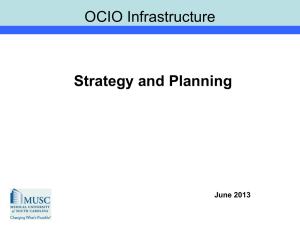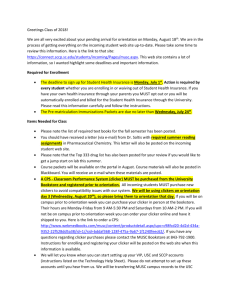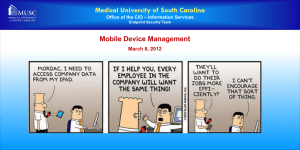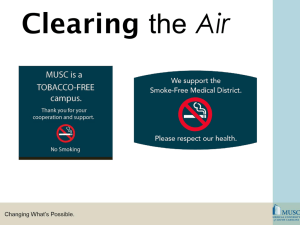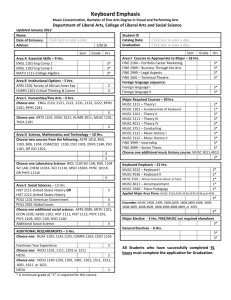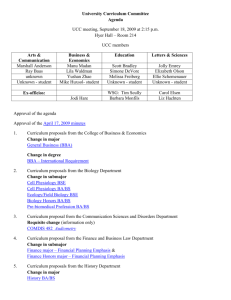Office of Institutional Effectiveness
advertisement
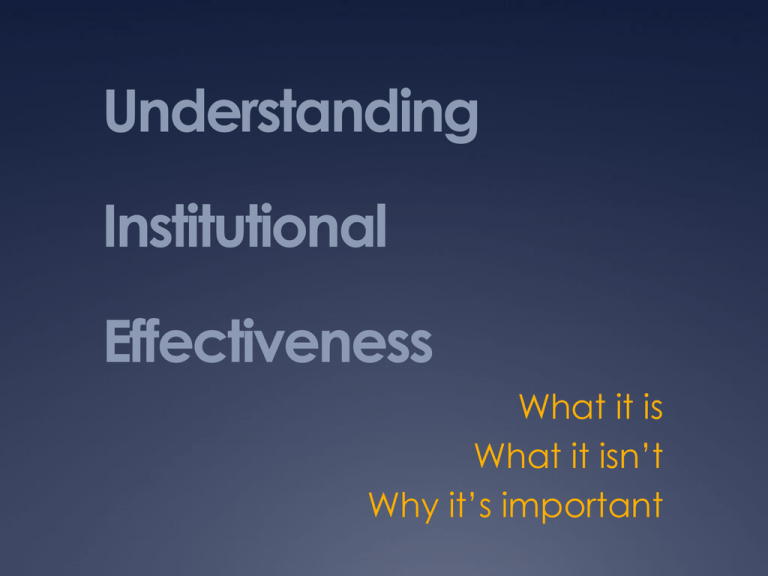
Understanding Institutional Effectiveness What it is What it isn’t Why it’s important What is “institutional effectiveness?” Systematic, explicit and documented process of measuring performance against the mission in all aspects of an institution In essence: What did we say we were going to do? How do we know we’ve done it? How well did we do it? How are we going to do it better? Collect data and analyze outcomes Identify goals and valid indicators of progress for each goal (aka metrics); identify thresholds of success (targets) for each metric Closing the Loop Interpret outcomes; communicate outcomes; track outcomes over time where appropriate and identify where improvements are needed Implement changes/modifications that are expected to improve outcomes The process of evaluating a unit’s effectiveness builds on MUSC Excellence Who must evaluate their effectiveness? University (Integration grid) Academic Programs Central Administrative units Student support units DMD VPAA CAPS PhD Biomed Sci Deans Offices Student Programs OT ESL Wellness Center Pharm D OAPR Student Health BSN Library OEM MD Finance and Administration CAE Etc…… Etc… Etc… [Research] OAPR [Community Service] MUSC Gives Back What institutional effectiveness isn’t (or shouldn’t be) Imbalanced as primarily a top-down or bottom up exercise Top down: Standardized process and centralized documentation Bottom up: Goal setting; assessment tools; target setting; determination of how to respond to results Unsustainable Must be continuous, thus must be both useful and easy Emphasize success over improvement Targets should be meaningful and ambitious—the ultimate purpose is to afford continuous quality improvement (not marketing) Why it’s important 1. It is the basis of accountability and continuous quality improvement 2. Demonstrates sound stewardship of resources 3. Inspires students’ and other stakeholders’ trust and confidence 4. It is required for academic accreditation (both professional accreditation and institutional accreditation) Integration grid (to show University Effectiveness) Excellence Pillars Administrative Unit: College of Pharmacy Dean's Office MUSC Mission People Service Quality Create an environment that is conduscive to high morale and productivity-reinforcing that MUSC is the right place to be Provide high quality services to students, alumni, patients, families, each other and our community with compassion, respect, dignity and pride Achieve the highest standards of excellence in education, research, and clinical and community service 1: Attract and retain high quality employees 2: Provide students a high quality education Strategic Initiatives Finance Create new and expanding opportunities, Maintain fiscallyemphasizing sound practices that collaborative partnerships will sustain our ability internally and externally, to operate and that benefit our research, grow in all areas of educational, and clinical our strategic mission enterprises 5: Implement first year of the new budget model 4: Expand the college's reach in the global education arena Globalization 6: Foster entrepreneuralism in faculty and students Entrepreneuralism Innovation Interprofessionalism Growth 3: Students are prepared to practice in an interprofessional environment Excellence Pillars Administrative Unit: College of Pharmacy Dean's Office MUSC Mission People Service Quality Create an environment that is conduscive to high morale and productivity-reinforcing that MUSC is the right place to be Provide high quality services to students, alumni, patients, families, each other and our community with compassion, respect, dignity and pride Achieve the highest standards of excellence in education, research, and clinical and community service 1: Attract and retain high quality employees 2: Provide students a high quality education Assessment Plan Finance 5: Implement first year of the new budget model 4: Expand the college's reach in the global education arena Globalization 6: Foster entrepreneuralism in faculty and students Entrepreneuralism Innovation Interprofessionalism Metric Target 1: Attract and retain high quality employees Goal 3: Students are prepared to practice in an interprofessional environment Rate of faculty satisfaction as determined by composite score from AACP survey 2: Students receive a high quality education Strategic Initiatives Growth Create new and expanding opportunities, Maintain fiscallyemphasizing sound practices that collaborative partnerships will sustain our ability internally and externally, to operate and that benefit our research, grow in all areas of educational, and clinical our strategic mission enterprises Rate of graduating students who would choose the SCCP again for their pharmacy education 90% Rate of students that pass the NAPLEX on first attempt 95% Rate of P1-P3 students who are satisfied with SCCP doctor of pharmacy program 90% Percentage of COP FT faculty rated as an effective teacher (≥ 4.0 on 5 pt scale, E*Value) 80% Percent of students seeking a residency who obtain a residency 60% 85% Staff report satisfaction with their job (MUSC Excellence Survey) 90% Faculty and staff retention maintained at prior year's rate Within 95% of prior year's rate Result Things that stay the same 1. Annual goal setting by units 2. Commitment to addressing the five Excellence Pillars 3. Annual institutional surveys Employee Satisfaction Survey Student Satisfaction Survey Things that will change 1. Nomenclature Old terms: Pillar goal=90% of COP employees agreed they are pleased to be working at MUSC New terms: Employs greater specificity Goal=Attract and retain high quality employees (formerly unwritten) Metric (ideally, at least 2 per goal)=Rate of COP employees who agree they are pleased to be working at MUSC Target=90% Things that will change 2. Tracking and reporting of goals and results is required by SACS and must be centralized OIE TaskStream 3. Three-year cycle of trend tracking, then identification and documentation of resultsdriven modifications/changes expected to improve results Units may elect to report modifications annually, but are not “required” to do so Office of Institutional Effectiveness Suzanne Thomas thomass@musc.edu 792-1533 Regan Fantry fantry@musc.edu 792-8102 Vince Moseley Bldg 41 Bee Street, 2nd floor
